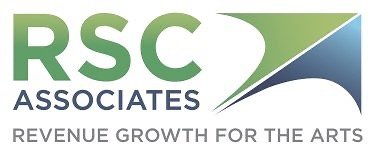TALK ABOUT CHURN - LEADERSHIP IN THE ARTS
With Bob Swaney
Today’s topic has been on my mind a lot lately: the leadership churn sweeping through arts and culture organizations since the pandemic.
Post-pandemic, we’ve experienced highly valuable management leadership at all levels, either moving to another arts organization or completely out of the arts. As a result, we’re seeing a trend of new executive leaders ascending to roles so quickly that they are often unprepared for the role’s expectations and challenges. With fewer seasoned leaders to serve as mentors in the field, this churn brings real challenges and has provided new risks to an industry already fraught with challenges.
In this episode, we’ll examine this issue in seven key points of concern and explore seven practical solutions that can help us reverse this troubling trend.
Read the full transcript below or click the button to listen.
FULL TRANSCRIPT OF THE PODCAST
Today’s topic has been on my mind a lot lately: the leadership churn sweeping through arts and culture organizations since the pandemic.
Here’s what we’ve experienced post-pandemic: Highly valuable management leadership at all levels, either moving to another arts organization or completely out of the arts. As a result, we’re seeing a trend of new executive leaders ascending to roles so quickly that they are often unprepared for the role’s expectations and challenges. Fewer seasoned leaders also means fewer mentors in the field willing—or able—to invest in the next generation of leadership. I know these are generalities, but these are real challenges, and they have provided new risks to an industry that is already fraught with challenges.
If you’re feeling this in your organization, you’re not alone. And if you’re not feeling it yet, buckle up because it’s coming.
So, today, we’ll examine this issue in seven key points of concern and explore seven practical solutions that can help us reverse this troubling trend.
Let’s start by laying out seven overarching concerns with this post-pandemic management leadership landscape.
Seven Major Concerns
1. Rapid Ascension Without Preparation
New leaders are being promoted into executive roles before they’ve had time to fully develop the skills and experience necessary to succeed. It’s not their fault—they’re stepping up because there’s a gap to fill. But this kind of leapfrogging can lead to missteps that affect the entire organization.
Source: According to a 2023 report by the National Arts Strategies (NAS), nearly 40% of arts organizations experienced leadership turnover between 2020 and 2023, with many replacements citing a lack of preparation for their roles.
2. The "They Don’t Know What They Don’t Know" Risk
Without sufficient experience, these leaders may not even realize what they’re missing. This blind spot can result in poor decision-making, especially in areas like fundraising, community engagement, and Board relations.
3. Mentorship is Disappearing
The field has lost many seasoned leaders who would naturally otherwise serve as mentors. Those who remain are stretched thin, leaving little time or energy to invest in developing others.
Source: A 2022 study by SMU DataArts revealed that mentorship opportunities in the arts sector have decreased by 25% since 2019, largely due to high retirement rates and increased workload demands.
4. Impact on Staff Stability
When leadership churns, it creates uncertainty and instability for all staff. This can lead to higher turnover, lower morale, and a fragmented organizational culture.
5. Impact on Staff Results
Underqualified leadership often leads to unclear direction, shifting priorities, and unrealistic expectations, all of which undermine staff’s ability to achieve results.
6. Increased Risk for Organizations
When leaders are underprepared, instability increases. From a business model perspective, arts organizations are at or near a “zero room for mistakes” threshold, and inexperienced leadership needs room to make mistakes. Therefore, organizations face greater risks to their fiscal and artistic model than ever before.
7. A Talent Pipeline at Risk
Having fewer mentors and less depth to future leadership development, the pipeline for future leadership suffers. If not addressed, this is a long-term problem that will affect arts and cultural organizations for decades.
These are big challenges, but they’re not insurmountable. The good news is there are actionable steps we can take to start turning things around. Let’s dive into the solutions.
Seven Solutions to Reverse the Trend
1. Invest in Leadership Development Programs
Organizations need to prioritize structured leadership development. Whether it’s through formal training programs, peer learning cohorts, or partnerships with universities, we must create opportunities for leaders to grow in their roles.
Best Practice: Partner with organizations like National Arts Strategies or the Center for Creative Leadership to design tailored development programs. Include coaching components to address specific organizational challenges.
2. Create Deliberate Mentorship Opportunities
If you’re a seasoned leader, this is your call to action: make time for mentorship. And if you’re a new leader, seek out mentors proactively. A good mentor can shorten the learning curve and provide critical perspective.
Best Practice: Implement a formal mentorship program with measurable goals and regular check-ins. Use a matching system to align mentors and mentees based on shared objectives.
3. Encourage Board Engagement in Leadership Development
Boards can play a significant role by supporting executive coaching or providing professional development stipends for senior staff. This is an investment, not an expense.
Best Practice: Include leadership development as a standing agenda item in Board meetings. Leverage Board members’ networks to connect staff with external development opportunities.
4. Prioritize Staff Stability during Leadership Transitions
Ensure clear communication and continuity during leadership changes. Create interim plans, involve staff in decision-making, and provide reassurance to minimize the disruption caused by turnover.
Best Practice: Develop a transition playbook that includes communication plans, interim leadership structures, and stakeholder engagement strategies.
5. Strengthen Staff Results through Clear Expectations
New leaders must work to set realistic goals and provide consistent direction for their teams. Leadership training should emphasize the importance of transparency, accountability, and collaboration.
Best Practice: Utilize tools like SMART goals (Specific, Measurable, Achievable, Relevant, Time-bound) to set clear expectations and track progress.
6. Build a Culture of Continuous Learning
Organizations should create an environment where it’s okay to admit what you don’t know. Encourage leaders to ask questions, seek advice, and pursue ongoing education. This humility is key to growth.
Best Practice: Offer stipends for professional development and encourage participation in conferences or webinars to foster a mindset of ongoing improvement.
7. Advocate for Patience in Leadership Transitions
Whenever possible, slow down the leadership transition process. Provide interim support, involve outgoing leaders in onboarding, and ensure that incoming executives have a realistic runway to learn and succeed.
Best Practice: Plan leadership transitions six to 12 months in advance whenever feasible. Include shadowing opportunities and phased responsibility handovers.
These solutions take time, effort, and resources. But the alternative—continuing down this path of unprepared leadership and diminished mentorship—is simply not sustainable.
The arts and culture sector is too important. Our organizations are not just cultural cornerstones; they’re drivers of community, education, and artistic inspiration. We owe it to our communities and to the next generation to address this.
If you’re listening today and you’re an executive leader, Board member, or even an aspiring leader, I challenge you:
What can you do right now to support leadership development in your organization?
If you remember just one thing from today’s podcast, make it this: Leadership is a journey, not a destination. Let’s make sure we’re building a map for those who follow.



